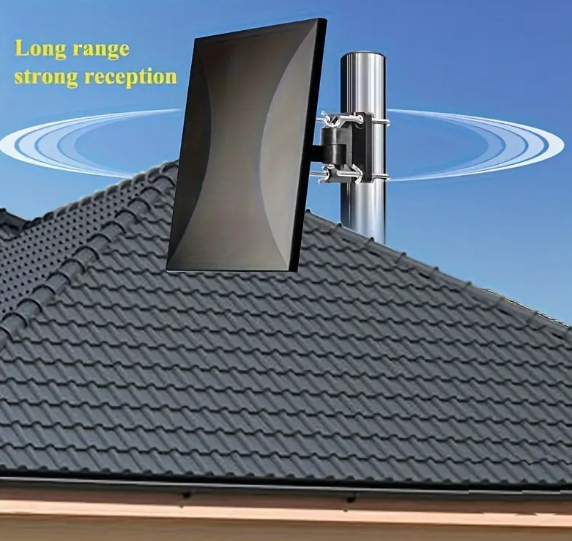
- English
- Español
- Português
- русский
- Français
- 日本語
- Deutsch
- tiếng Việt
- Italiano
- Nederlands
- ภาษาไทย
- Polski
- 한국어
- Svenska
- magyar
- Malay
- বাংলা ভাষার
- Dansk
- Suomi
- हिन्दी
- Pilipino
- Türkçe
- Gaeilge
- العربية
- Indonesia
- Norsk
- تمل
- český
- ελληνικά
- український
- Javanese
- فارسی
- தமிழ்
- తెలుగు
- नेपाली
- Burmese
- български
- ລາວ
- Latine
- Қазақша
- Euskal
- Azərbaycan
- Slovenský jazyk
- Македонски
- Lietuvos
- Eesti Keel
- Română
- Slovenski
- मराठी
- Srpski језик
Indoor antenna VS Outdoor antenna:which one is better?
2025-03-18
In modern wireless communications, antennas are key components that connect devices to the network. However, choosing an indoor antenna or an outdoor antenna often confuses users. This article will analyze the advantages and disadvantages of indoor and outdoor antennas from multiple perspectives such as performance, installation, and applicable scenarios to help you make a wise choice.
1. Performance comparison
Outdoor antenna
(1) Advantages: Outdoor antennas usually have higher gain and wider coverage, and can better receive long-distance signals, especially in areas with weak signals or more interference.
(2) Disadvantages: They are greatly affected by weather, and extreme weather (such as heavy rain and strong winds) may affect their performance.
Indoor antenna
(1) Advantages: Indoor antennas are easy to install, suitable for small-scale coverage, and are not affected by weather.
(2) Disadvantages: Signal penetration is weak, especially when there are many obstacles such as walls and floors, the performance may be greatly reduced.
2. Gain
(1) Indoor antenna: Generally, the gain is low, generally between 4dBi and 5dBi. This limits its signal transmission and reception range, but it is sufficient for some short-distance applications and indoor signal coverage scenarios.
(2) Outdoor antennas: They often have higher gain, generally ranging from 8.5dBi to 14dBi or even higher. Higher gain allows the signal to travel farther, be more concentrated in a specific direction, and improve the ability to receive weak signals. For example, in long-distance wireless communications, or when receiving TV signals from distant broadcast towers, outdoor antennas with high gain have more advantages.
3. Installation and maintenance
(1) Outdoor antennas:Complex installation, requiring professional tools and skills, and may require additional waterproofing and lightning protection measures. - High maintenance costs, requiring regular inspections to ensure its stability and safety.
(2) Indoor antennas :Simple installation, users can complete it by themselves without additional protective measures. - Low maintenance costs, almost no special attention is required.
4. Applicable scenarios
Outdoor antennas: Suitable for areas with poor signal coverage such as rural and suburban areas, or scenarios that require long-distance transmission (such as wireless monitoring, remote communication).
Indoor antennas : Suitable for areas with good signal coverage such as cities, offices, and homes, or the need to expand small-scale wireless networks.

Future trends With the popularization of 5G and the Internet of Things, antenna technology is also constantly improving. In the future, smart antennas and hybrid antennas (combining the advantages of indoor and outdoor) may become mainstream, providing users with more flexible and efficient solutions. Indoor antennas and outdoor antennas have their own advantages and disadvantages. Which antenna to choose depends on your specific needs. If you need to cover a large area or an area with weak signals, an outdoor antenna is a better choice; if you pay more attention to convenience and small-area coverage, an indoor antenna is more suitable.
